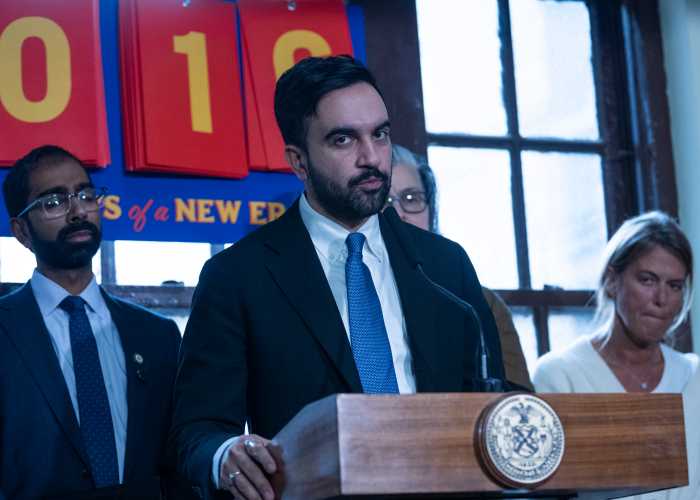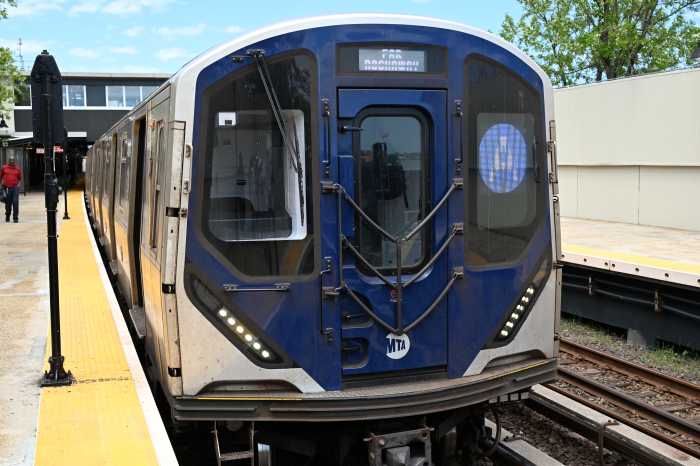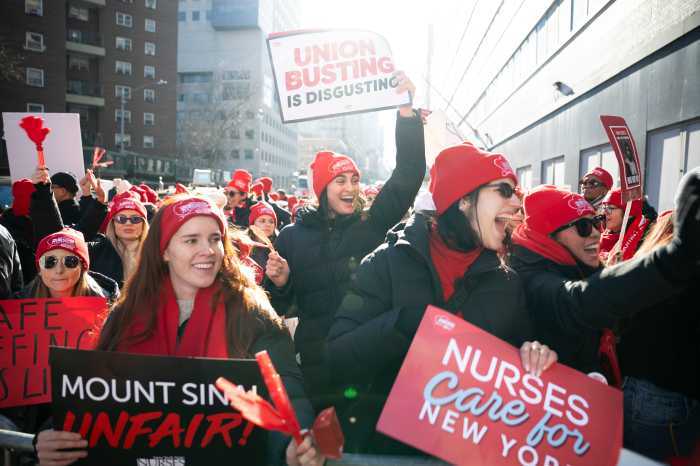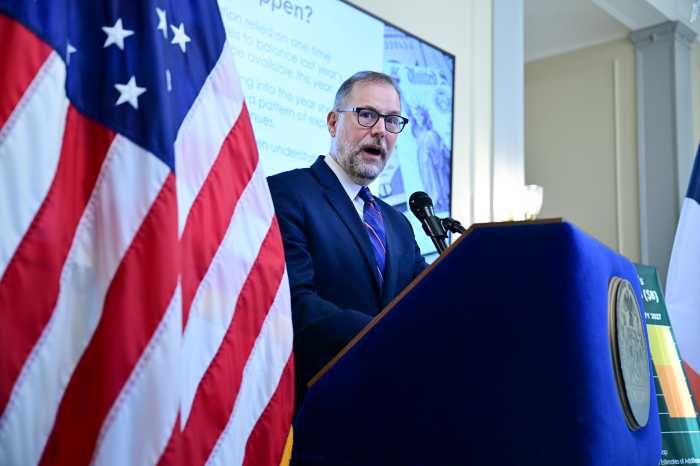
Captain Zahid Williams, head of the NYPD Transit District 30 in Downtown Brooklyn, sat in a room in the Hoyt-Schermerhorn station one recent morning, sorting through wanted posters and putting together pieces of a crime fighting puzzle that’s as much about how to prevent crimes from happening as it is about catching the bad guys.
Williams went over deployments — a constantly changing beast — using pattern identification modules (PIM) to direct his officers. PIMs are a group of crimes that look similar (think several stolen cellphones near each other), but can’t be called an actual pattern just yet, needing further inspection.
“We have two borough PIMs that are open,” Williams said from a desk at the front of the brightly-lit, square room, debriefing officers, sergeants and lieutenants last month.
The first seems less certain, involving several thefts of unattended items that don’t appear related. The other, a grouping of five crimes against sleeping passengers, is worth another look.
“It looks like what’s driving this is someone is basically getting on the train and riding southbound through our command,” Williams told the group. “Whoever is doing this is likely doing it while setting up somewhere along the A or the F line in Manhattan.”
Crime in subways is relatively low — an average of 6.4 major felony crimes per day. So far this year, there have been 1,310 grand larcenies, a 4.3 percent decrease from the same time period last year, according to the department. There have been 397 robberies, a 5.9 percent decrease from 2015. And there have been 246 assaults, or an increase of 41 attacks compared to last year.
Lower level sexual assaults, like public lewdness or gropings, are rising, a fact police attribute to increased reporting as opposed to an actual increase in crimes. There have been 385 reports of forcible touching through Oct. 30 this year (with 233 arrests), compared to only 340 for the entire year in 2015, police said.
Part of preventing these crimes from happening is studying the mannerisms of those who commit them: they tend to go to the most crowded part of the train, gaze around a lot and choose not to get on some cars, Transit Chief Joseph Fox said.
He’s been pushing increased reporting as a “measure of success” since he got back from London in March 2015 after studying how the British Transport Police handles sex crimes.
“One of the most effective tools, most important tools in addressing this problem is reporting about it,” Fox said. “Talking about it also can help prevent it to the extent that women are aware that it’s something taken seriously and we hope that they will be more prone to shout out when somebody’s crowding them or move away before it happens.”
And victims of these crimes can write a statement right there on the platform, which serves as an affidavit in court.
Tracking recidivists is another part of the puzzle. Police are notified when someone with a history of these crimes is released from prison, keeping an eye out for them. Williams said his cops are even notified when a serial sex crimes perpetrator goes to court, so he can stage his cops at Jay Street-MetroTech, the closest station.
“We know exactly what time they’re getting out, what time they’re going in,” he said. “And it’s been fruitful for us at least once in the past. It’s just another piece that paints the picture.”
Going over three persons of interest for his sleeping passengers PIM, Williams said each has a criminal history.
“He’s a bad guy,” Williams said about one of them. “Are they doing it? Who knows. They have a long history of it. These are serial perps and they are seen in our command and we are seeing a small uptick in sleeping passengers, so put two and two together, those are your persons of interest when you guys are out there on [operations].”
There are a total of 2,591 transit officers, split up between a dozen transit bureaus, and several task forces and specialized units. Each transit bureau has from 141 to 211 officers.
“We have police officers who are in plainclothes who will be riding the trains and stop at certain stations, and that’s dependent on what’s happening that week, that month,” Fox said. “Most of our deployment is fluid.”
This past spring, transit police stepped up patrols, responding to a small spike in subway crime. Deployments, however, are constantly adjusted and as violent subway crime has started to decline, the focus has turned to nonviolent felony thefts, which now make up half of all major transit crime, police said.
Eyeing sleeping passengers in District 30, Williams said cops should look to both wake up victims and search for suspects. They often set up on platforms that function as “choke points,” or stations where trains come into and leave the borough.
Joseph Giacalone, a retired NYPD detective who lectures at John Jay College of Criminal Justice, said this undercover targeting can become an effective tool.
“Doing undercover work is good because you catch these guys live, in the act doing something and you have a better case,” Giacalone said, but added the department “runs this fine line between keeping crime down and avoiding upsetting people’s civil rights.”
The jury is still out on how effective the department’s precision policing will end up being, he said, but lower crime only helps.
“The low numbers make it easier to identify hot spots. It’s not like years ago [when] you didn’t know where to go next,” he said. “You can concentrate your personnel in certain areas. That’s the advantage that police have in 2016, as opposed to 1994.”
Robert Gangi, the director of the Police Reform Organizing Project took issue with the concept of pre-emptively focusing on people who have been arrested before.
“You’re criminalizing people before they’ve committed a crime. We have no objections to putting more police [at a] subway station, but then you wait until someone commits a crime,” Gangi said. “To pick up someone who has been engaged in his behavior before … it violates peoples’ rights. It gives extraordinary power to the police department, unchecked power.”
Bennett Capers, a professor at Brooklyn Law School specializing in the relationship between race, gender, and criminal justice, said police can often legally pick up someone for a minor offense and question them for intelligence.
“The way the law is now, we’ve just created so many little offenses that it’s very easy to stop somebody for anything,” Capers said. “That’s the way policing works now.
“Clearly in a city with this many people, they’re going to focus their attention on likely suspects. That makes sense as long as it’s done in a way that’s not arbitrary, in a way that’s not racially discriminatory, and in a way that’s effective,” he added. “It might be perpetuating certain targeting. But I guess the question is, ‘What’s the alternative?’”
Transit crime by the numbers so far in 2016:
— 1: Number of homicides in the transit system
— 397: Number of robberies
— 246: Number of felony assaults
— 15: Number of burglaries
— 1,310: Number of grand larcenies
— 2: Number of shootings
— 814: Total number of sex crimes
— 385: Number of forcible touching incidents
— 263: Number of public lewdness incidents
— 2,591: Total number of police in the transit system
— 12: Number of transit districts








































